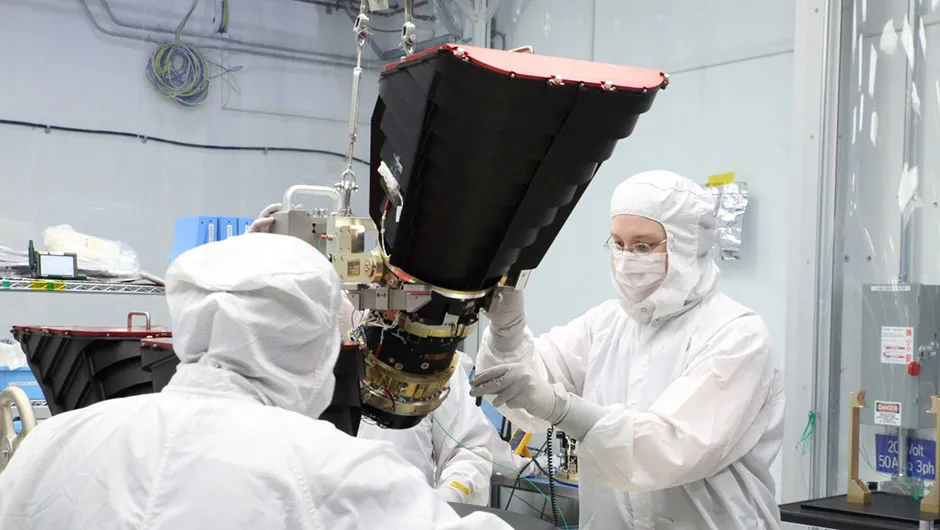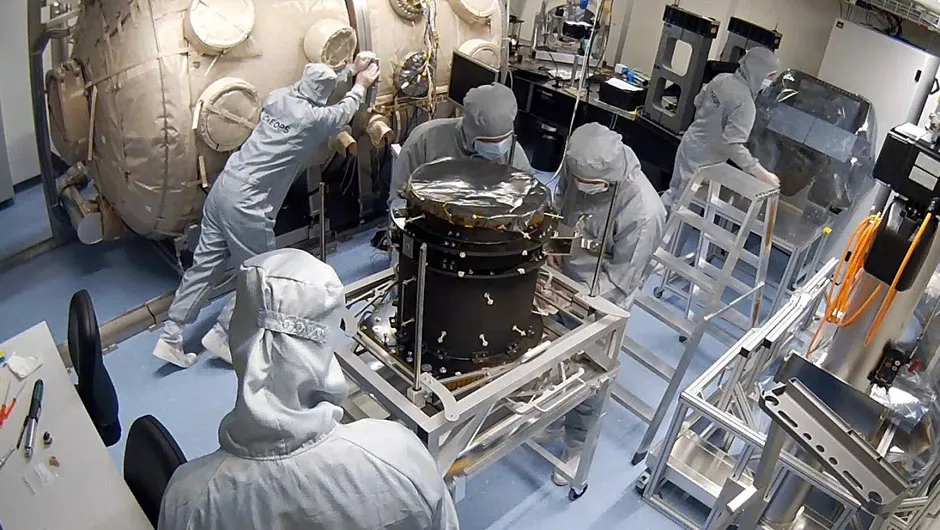NASA's new exoplanet hunter TESS (Transiting Exoplanet Survey Satellite) wasfired into orbit from Cape Canaveral on 16 April 2018. The mission is one of the latest in the search for exoplanets:planets orbiting stars other than our own Sun
In the spring of 2020, the number of candidate exoplanets may well be six times the current tally of confirmed ones, 3,584. TESS is expected to be responsible for much of this increase
“Until the late 2020s, no other mission than TESS will carry out these kinds of observations,” says principal investigator Dr George Ricker of the Massachusetts Institute of Technology (MIT).
TESS builds on the success of its predecessor, NASA’s Kepler space telescope.
Kepler studied some 150,000 faint, distant stars in the constellations of Cygnus and Lyra for signs of orbiting planets.
TESS will search the whole sky, focusing on a few hundred thousand stars brighter than mag. +12, most of which are much closer to the Sun than the stars in the Kepler catalogue. It may even find planets around some naked-eye stars.
“This is a true discovery mission,” says astrophysicist Professor Sara Seager, who is MIT’s deputy science director for TESS.

Discovering exoplanets: the transit method
When an exoplanet’s orbit is observed edge-on, it crosses the face of its parent star once per revolution.
This transit results in a minute, temporary drop in the star’s brightness.
Since the size of a star is generally known, the change in its brightness, or ‘transit depth’, can be used to tell you the size of the exoplanet passing in front of it.
Subsequent measurements of the star’s ‘wobble’ – due to the gravitational tug of the exoplanet – can reveal the planet’s mass.
With these two properties, astronomers can extrapolate further characteristics, such as the exoplanet’s density and makeup.
TESS is going to vastly improve on Kepler. Originally designed in 2006 at MIT with seed money from Google and the Kavli Foundation, it was first proposed to NASA in 2008.It was finally selected as part of the agency’s Explorer programme in the spring of 2013, around the time Kepler’s primary mission came to an end due to the failure of two of its reaction wheels, which are used to orientate the spacecraft.

According to Seager, TESS is expected to find some 20,000 exoplanet candidates in its first two years of operation.
“For at least a few dozen Earth-like worlds, both sizes and masses will be determined,” she says.
Scanning the skies for distant planets
TESS is a relatively small spacecraft, outfitted with an array of four sensitive, wide-angle cameras. Each camera has a 16.8 megapixel detector and a huge field of view of 24x24°.
Together, the cameras cover a large swathe of sky (a ‘sector’ in TESS parlance) that reaches from the ecliptic (the central plane of our Solar System) to one of the ecliptic poles (the two points on the sky perpendicular to the ecliptic).
The whole sky is divided into 26 of these sectors – 13 in the northern sky and 13 in the southern sky.
Each sector will be monitored for about four weeks, with two-second exposures being taken every two minutes.
In its first year of operation, TESS will focus on the northern sky; in its second year, the cameras will be aimed south.
Since each sector is observed for only four weeks and three transits are generally required to confirm the existence of an exoplanet, TESS will mainly discover short-period exoplanets that orbit close to their parent stars.

From Kepler observations, we know that these are plentiful.
Longer-period planets may be found closer to the north and south ecliptic poles, where sectors overlap.
To facilitate the observing strategy, TESS will be brought into a strongly tilted, highly elliptical and very stable high-Earth orbit, with its lowest point (perigee) at 108,000km and its highest point (apogee) at 373,000km, almost as far away from Earth as the Moon is.
After launch, a lunar-gravity-assist flyby will help TESS slide into its final orbit, which will have a period of 13.7 days, half the orbital period of the Moon.
Once per orbit, around the point at which TESS reaches perigee, data from the preceding two weeks will be beamed to a ground station on Earth in a three-hour telecom session.
The high-Earth orbit keeps TESS’s sensitive detectors and electronics well outside the potentially damaging influence of Earth’s Van Allen radiation belts.

In closer detail
During the first few months of TESS’s mission, European scientists will be preparing for the launch of CHEOPS (CHaracterising ExOPlanet Satellite), a smaller but more sensitive instrument that started out as a Swiss project but is now an official European Space Agency mission.
“CHEOPS is really a follow-up mission,” explains principal investigator Professor Willy Benz of the University of Bern, Switzerland.
“It won’t make new discoveries, but it will study known transiting planets in much more detail, to derive very precise radii.”
CHEOPS is a 30cm space telescope with a high-precision photometer that will study one star at a time during its 3.5-year mission.And, eight years from now, ESA plans to launch its versatile PLATO mission (PLAnetary Transits and Oscillations of stars), which could be described as TESS on steroids.
Using no fewer than 26 small telescopes, PLATO will spend at least four, and possibly eight, years on a search for longer-period planets around up to a million stars.

It will focus on Earth-like planets orbiting in the habitable zones of Sun-like stars and it may very well discover the first true Earth analogue, assuming that discovery hasn’t already been made by TESS.
By then, NASA’s James Webb Space Telescope (JWST), as well as sensitive instruments on extremely large ground-based telescopes, will regularly sniff out the atmospheric composition of transiting planets for traces of biomarkers such as oxygen, ozone and methane.
Much of the work done by JWST will follow up on observations already carried out by TESS, as TESS searches the skies for potentially interesting targets.
“TESS is a finder scope for James Webb,” says Ricker. “It will tell us where we want to point the JWST to characterise Earth-like worlds.”
It seems the coming decades will usher in a new era in the search for exoplanets, and the launch of TESS is just the beginning of that exciting journey.
Govert Schilling is a science writer and journalist.
This article originally appeared in the March 2018 issue of BBC Sky at Night Magazine.
